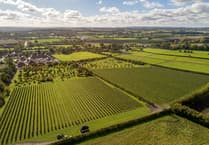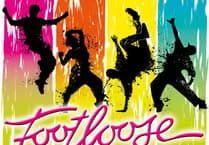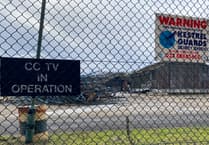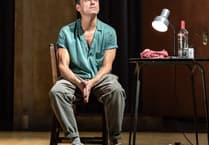This is a response to some of the concerns, fears and misconceptions raised by Cllr Michaela Martin’s independent retailers feature in the March 30 edition of the Herald, and by subsequent responses from readers.
Myths
The article states that town centre pedestrianisation is a leftover from the brutalist 1960s. I would agree that some of the building in this era left a lot to be desired, which is why much of it is being removed or adapted. But it seemed right at the time, creating the shopping centres that were successful in their day. However, as we all know, online shopping has decimated some of these areas, leading to a rapid rethink on what is needed for the future.
But to assert that pedestrianisation is the problem here is a misconception. None of the regenerations that are now happening will choose to reintroduce vehicles amongst the shoppers – that would be very unpopular and against all current thinking.
What pedestrian zones have achieved, everywhere that I can find evidence of, is a much more attractive place for people, which has benefitted wellbeing and the retail economy. That applies to small market towns as much as it does to areas in the big cities.
Harper Dennis Hobbs surveys
Cllr Martin’s article also misinterprets the respected Harper Dennis Hobbs (HDH) annual reports on vibrant retail towns.
HDH assesses the combined retail offerings that lead to the most successful retail locations. In recent years, it reports how the changing retail environment has benefited small towns, especially those with a strong presence of independent stores. Farnham ticks all the boxes here, coming 11th across the country in 2022.
“
Small affluent towns – such as Wimbledon Village, Cobham or Marlborough – have often ranked highly as they have low vacancy rates, aspirational brands and a retail mix that is well-aligned to the local consumer, and therefore have a good retail vitality.
Harper Dennis Hobbs (Retail Week)
The top 50 locations listed by HDH include towns and cities with an eclectic mix of street characters. Some have compact pedestrian zones, like Chester, and some are 20th century wide high streets, such as Beaconsfield.
HDH also emphasises the benefits of a strong tourist pull, in boosting the retail economy. The post-Covid rise in domestic tourism has elevated tourist destinations in their rankings.
Importance of Tourism
Farnham should be a tourist hot spot, mainly driven by its wonderful heritage town centre. Unfortunately, the traffic growth over the last 70 years has not done our town centre any favours.
Congestion, adverse pedestrian safety and air pollution have all contributed to a town centre that has become untidy, run-down and unwelcoming to visitors.
This has affected the hotel trade, in particular, leading to weak occupancy rates (nights stayed), and now, the loss of the Bishop’s Table hotel. Just compare the state of the buildings in Chester, a heritage market town similar to Farnham (pictured above).
“
Damning statistic for Farnham: “Footfall in Godalming is 25% higher than Farnham.
Farnham Herald, April 2023
Importance of Place
The one thing that everyone, nationally, agrees on for the success of towns is the importance of place in current and future planning. Place addresses everything that relates to the prosperity, attractiveness and citizen wellbeing in a locality.
Placemaking is such a critical factor in modern town planning that it has become centrepiece in the government’s National Planning Policy Framework and a host of supporting design guides. It also figures in many major studies conducted by universities, consultants and conservationists on behalf of government, such as the Farrell Review, Streets for All (Historic England), The Pedestrian Pound (Living Streets), Manual for Streets (DfT), Sustainable Travel (DfT, TRL), High Street 2030 (Institute of Place Management).
All the experience from elsewhere shows that pedestrian zones in town centres:
- Attract more visitors and shoppers.
- Benefit the retail economy – more shoppers will spot an inviting shop when they are on foot, rather than driving by.
- Provide a much better community space where people will stay around longer.
- Create event space, thus attracting more visitors.
- Encourage property owners to invest in (smarten up) their properties.
- Provide a better security environment for visitors, shoppers and shop owners.
- Sustain, very successfully, in compact street environments – as we have in Farnham.
Atkins Consultancy for South Gloucestershire Council
- Making space for walking and cycling can increase customer levels and boost the local economy, as opposed to accommodating motorised traffic.
- Creating spaces for people, not vehicles, can bring many benefits, including increased footfall, increased retail sales and can attract new businesses, resulting in fewer vacant units and increasing the pull factor.
- More people travel to local centres by walking and cycling, and fewer by car than is commonly thought.
- Places with high levels of passing traffic can negatively impact the number of visitors and therefore vitality of local centres.
- People who travel actively to local centres spend more money than those who arrive by car.
Traffic displacement
To those who worry about traffic displacement to the outer areas, I would refer them to another detailed study.
Atkins, in its consultancy for South Gloucestershire Council, wrote: “Using evidence from 70 case studies, Cairns et al (1998) found that it was rare for any road space reallocation scheme to create substantial congestion or disruption. They found that levels of traffic can decrease or ‘evaporate’ due to people adjusting their travel behaviour by changing modes or reducing levels of travel.”
Fear of change is a typical response of people and businesses to transformational projects. So long as the projects are well-designed, this fear usually dissipates very quickly as the new place evolves.
Farnham
So, what would be the biggest success factors for Farnham town centre? Here’s my list:
- Create a pedestrian zone centred on The Borough. Only essential vehicles and ‘town centre’ buses allowed in – as is typical in such areas.
- Capitalise on our prime asset – the mixed heritage architecture that blends well and is protected as a conservation area. Having a unique selling point is the best way to attract visitors.
- Stop the through traffic – the domination of vehicles in the zone deters shoppers from staying, leads to a disregard for the upkeep of the buildings, creates an intimidating and unsafe pedestrian environment, perpetuates the poor air quality caused by vehicle emissions and particulates, demands unsightly traffic management paraphernalia.
- Use some of the liberated road space to provide a better cycle infrastructure and more reliable bus services.
- Re-route the existing bus services out of the pedestrian zone and invest in two, new, high-convenience eco services going E-W and N-S through the centre, thus encouraging people to use public transport.
- Make sure that people coming to town by car, from any direction, have convenient car parks. Construct access to the Upper Hart car park from Castle Hill.
- Build a high quality, level paving surface throughout the zone with well-designed street furniture, leaving space for a 3-metre vehicle path, loading space and event space.
Of course, this transformation could not happen overnight. There would need to be a series of changes leading to a completion around 2030, so that everyone had a chance to adapt to the new town centre. Such a scheme is probably the only way in which the town centre can overcome its air quality problems.
This will create is a vibrant town centre, frequented, daytime and evening time, by many more people than today. It will be safer, tidier and put Farnham at the top of any ‘best town centre’ surveys.
![In March, Cllr Martin wrote ‘I cannot think of a single place where [pedestrianisation] has been successful’ – but would Farnham not want to replicate the success of the likes of Eastgate Street in Chester (pictured)?](https://www.liphookherald.com/tindle-static/image/2023/06/05/13/Chester%20pedestrian%20zone%201%20lighter40pc.jpg?width=752&height=500&crop=752:500)



